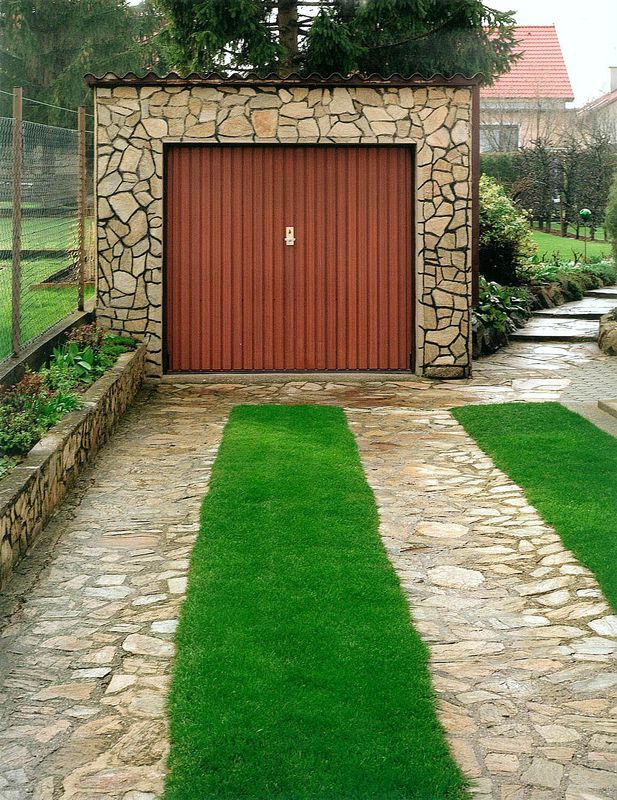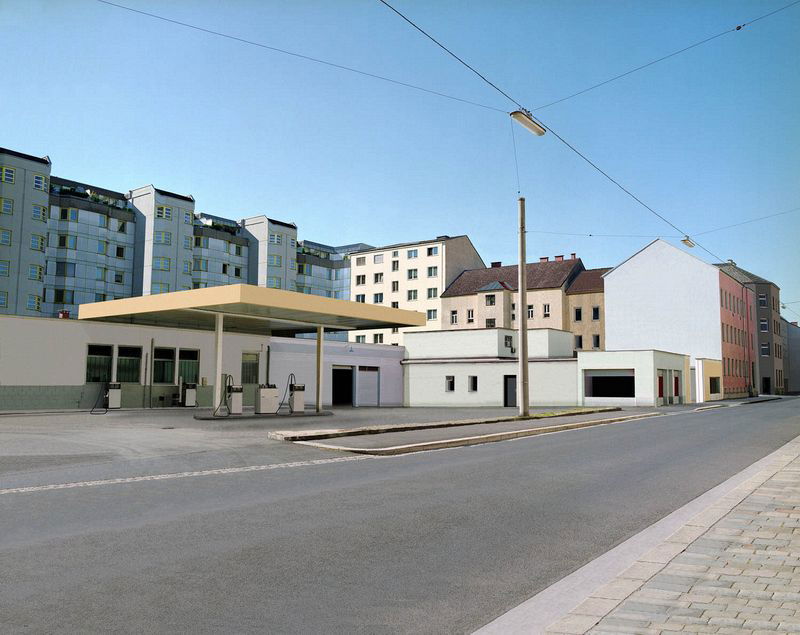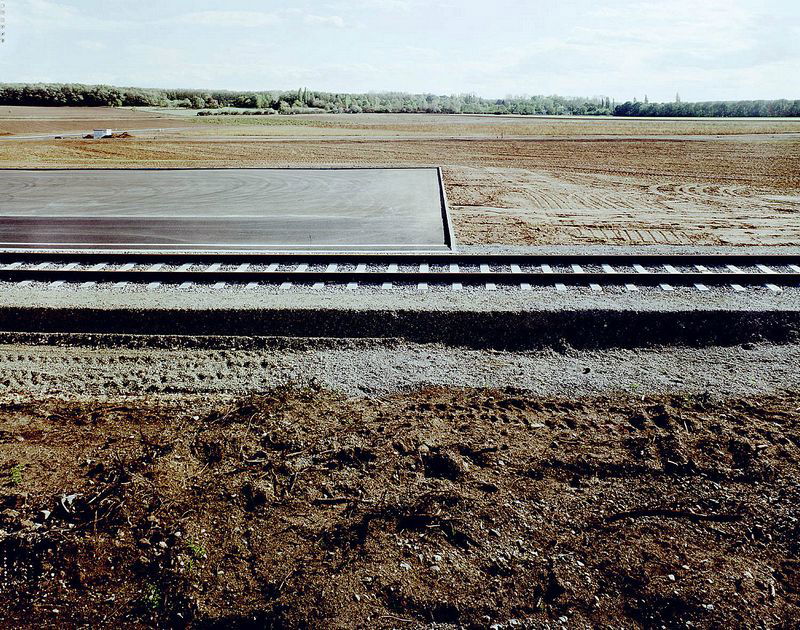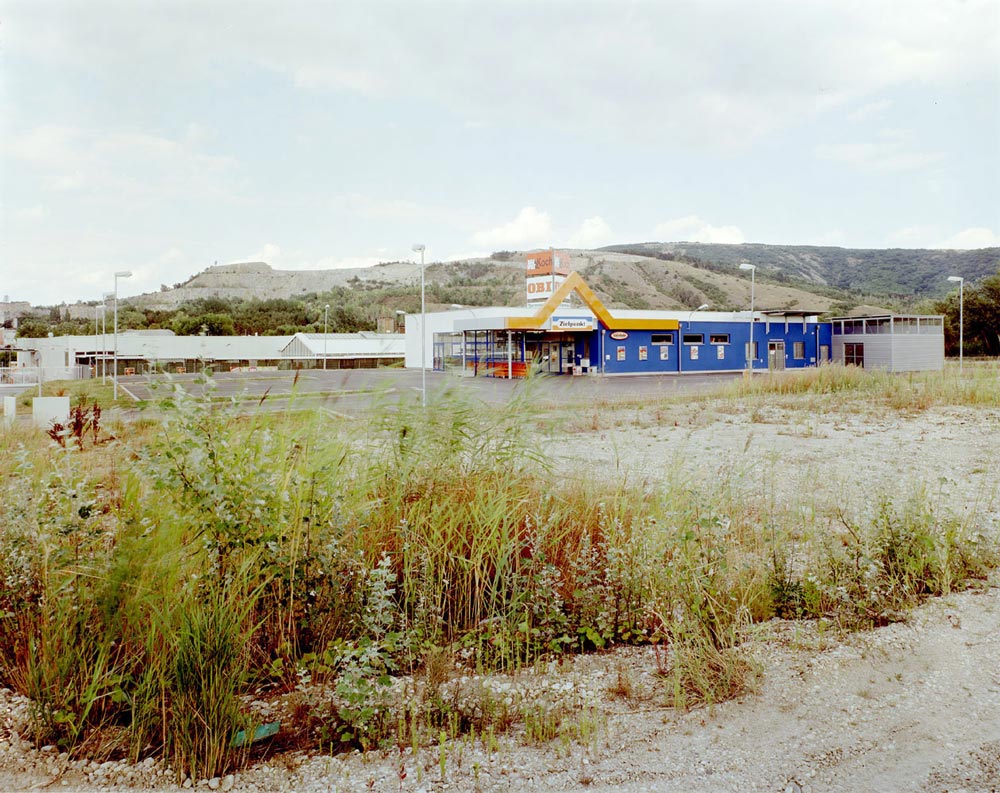Gisela Erlacher, Edgar Knaack, Gregor Graf
Drei Positionen zu Stadt-Landschaften in Österreich
“Photographers understand more about architecture than architects do about photography”. (Verena von Gagern)
Three Austrian photographers show their photographic relationship to urban and rural space and the architecture to be found and discovered there in completely different approaches and positions. Despite the diversity of their work, their precise observations reveal unknown aspects and views of contemporary building, living and consumption structures in Austria.
Gisela Erlacher
Gisela Erlacher focuses on elements of the rural architectural fabric of southern Styria that are present in everyday life but hardly noticed in their inconspicuousness. On the one hand, there is the twelve-part picture series “Eigenheim, Südsteiermark”, in which she tells us through the photographic formal austerity of the frontal view how the architecture and house design of people and builders in the countryside works. Quasi as a counterpart to her commercial photographic architectural images, which, however, represent only a small proportion of what is really built in Austria. It was precisely her intensive professional involvement with so-called “successful” or “good” architecture that sharpened her eye for what lies outside the elitist representation of good taste. Both new buildings and renovated houses stand out from their surroundings with their garish colours like man-made foreign bodies. Erlacher’s deliberately restrained pictorial language mutates her “Eigenheime” into almost absurd-seeming toy houses, thereby paraphrasing tendencies that can be found in Austria and not only in Styria.
In the more recent group of works, “Details”, she concentrates her gaze on individual or special features that take on almost absurd qualities through the careful choice of cropping and image composition. They are, as she herself remarks, “architectural ready mades”, thoroughly artistic approaches, but stuck in their early stages, and so again refer to the curious manifestations of the house-building universe. Photographed sculptures of banal everydayness, even ugliness in some way bizarre but also beautiful. This poetry of the discovered everyday, which Erlacher finds and captures with her camera, is the charm of her work.


Gregor Graf
Gregor Graf’s group of works “Hidden Town” consists of photographic works with street views of Linz. However, Graf offers the viewer photographs that have been cleansed of all signs and human existence that otherwise exist in public space. Through deliberate retouching, Graf has made all the billboards and signs disappear and, through this process, emphasises the architectural and structural features of the city in an extreme way.
The streets seem unreal, culturally interchangeable and alien, like model buildings for urban concepts. They demand a new kind of perception, beyond the usual patterns of our everyday visual experience, which have long been conditioned to the permanent scanning of logos and verbal information in commercialised public space. A view of otherwise concealed architecture and “clarified” spatial systems opens up. “I specifically searched for architecture from the 60s and 70s in Linz and selected the locations for my pictures according to aspects of structural nesting, among other things; the original historical significance of the streets and their transformation also played a role.” In a time of withdrawal into one’s own four walls , the interconnectedness of reality and live shows on television and the virtual worlds of computers, the artist still has the possibility of rebellion – and Graf does this by redesigning the city.

Edgar Knaack
In older photographic works, Edgar Knaack documented the traces of the past on demolished buildings. Now, inspired by his own images of municipal housing built on the periphery, they are traces of the future that describe what is to come. In his more recent works, presented for the first time at the Fotohof, Knaack is interested in the interface between urbanity and rurality, that borderland of the periphery where urban planning is pushed forward into empty space. His gaze is focused on the architectural “land grabbing” that takes place for commercial reasons on the one hand, and urban planning measures on the other. He directs his eye and the large-format camera in tried-and-tested documentary style to the direct confrontation of living space and usable space, observed mainly on the borders of Vienna and in neighbouring Lower Austria. “It starts with a street, followed by billboards and finally the further infrastructure leading to the land grab”. With this, Knaack reflects the first symptoms of what has become a global phenomenon, namely the independence of the periphery. What used to be the core zone of every town has become a pedestrian zone. Today, even on the periphery of small towns (see Eugendorf, Wals), business centres are emerging where shopping is mutating into an event experience detached from need. Knaack locates the traces of this almost everywhere; in careful compositions and observations he integrates the found harbingers of the land grab into his precise landscape shots and documents the ambivalence of a melancholy mood.

